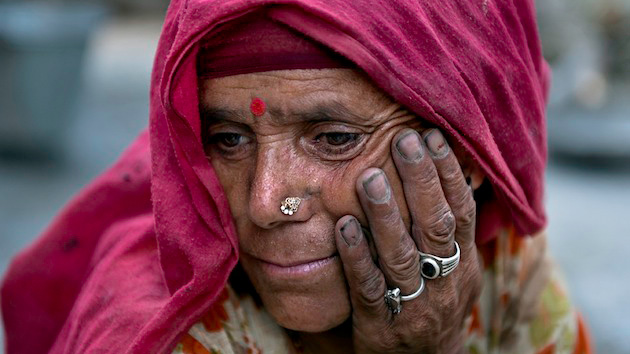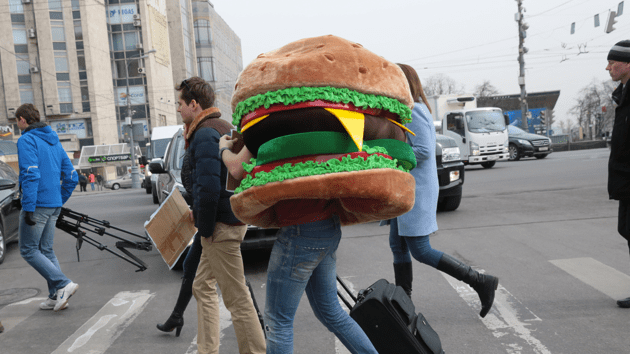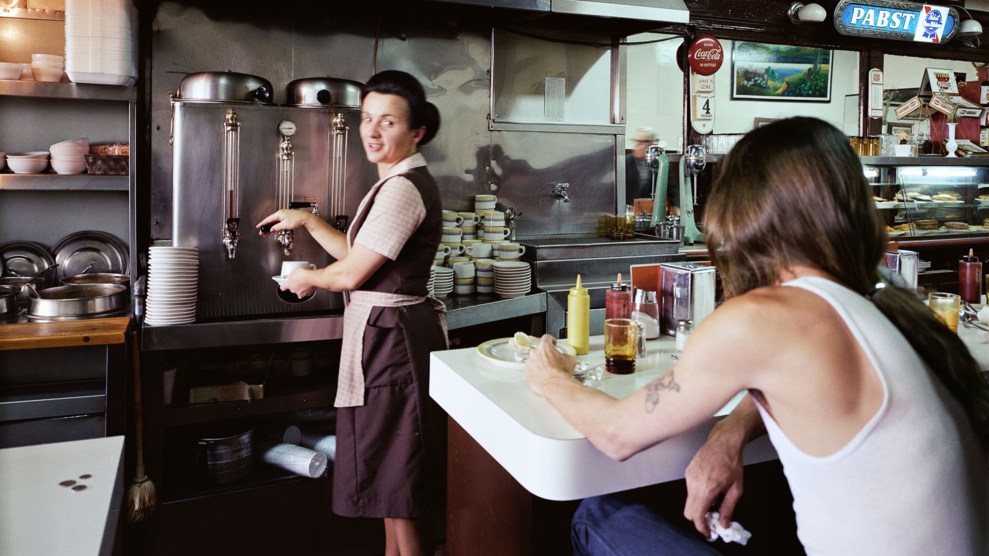Last summer, fry cooks, drive-thru cashiers, and burger flippers in 60 cities took to picket lines to protest low wages that have barely grown in 40 years. In fact, adjusting for inflation, average hourly pay for fast-food workers has fallen 29 cents in the last decade alone.
The protests have since multiplied in size and scope: Fast food workers walked off the job in 100 cities this past December, calling for a minimum wage of $15 an hour. In March, lawsuits were filed in three states alleging an epidemic of wage theft at McDonald’s franchises, kicking off demonstrations from New York to Kansas City to Detroit. Last month, a coalition supporting the protests sponsored the first-ever national poll of fast food workers—which found that 89 percent of them reported having wages stolen—and a new analysis was released showing that top fast-food executives now make about 1200 times more than their franchise staffers.
After hearing about last summer’s demonstrations, California photographer Gregg Segal wanted to illustrate the stagnant wages being paid to many of America’s 21 million fast food industry employees. He attended a Service Employees International Union organizing meeting in Hollywood where he met five workers, all employees of McDonalds or Burger King, some in the ritziest parts of LA. He asked them to don old-school uniforms of their respective employers from the ’60s and ’70s that he’d dug up on eBay.
“I wanted a quick read that says, ‘This is a fast food worker today,'” Segal says. “And the wages are as vintage as the uniforms.”
For a sobering look at what fast food workers are up against, try our wage calculator below these photos and see how your family would fare on a typical fast-food paycheck.
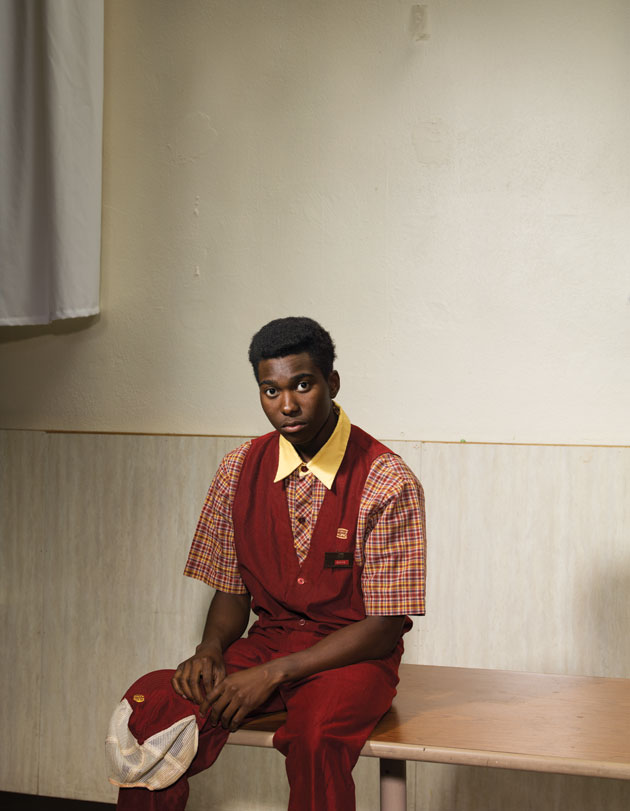
Samuel goes by “Homer” and works at a Hollywood Burger King. He moved to Los Angeles from North Carolina to live with his dad, a pastor. They live in a rough part of south central LA in a room attached to the makeshift church where Homer’s dad preaches. Homer works his fast food job three or four days a week and attends junior college.
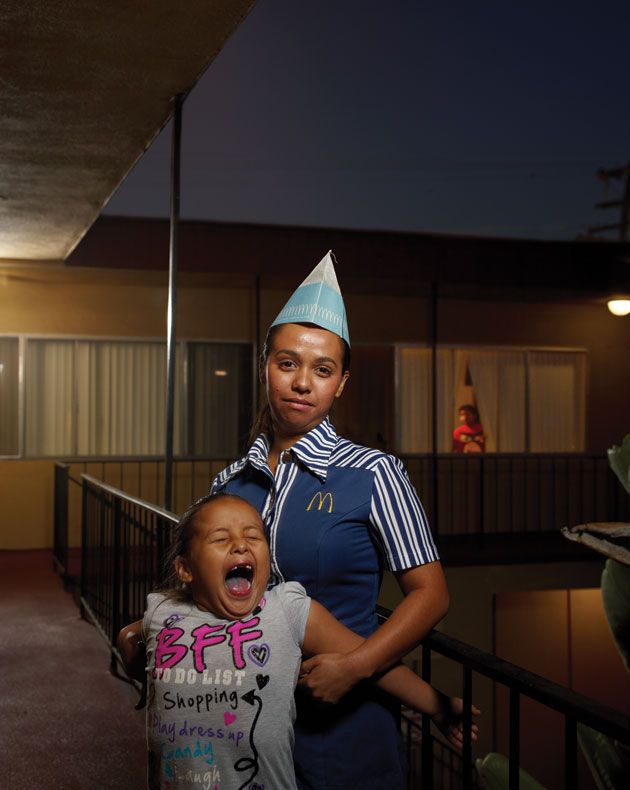
Jackie works at a Hollywood McDonald’s. She’s a single mom to her daughter (pictured); this photo was taken at the apartment complex where the pair shares a studio.
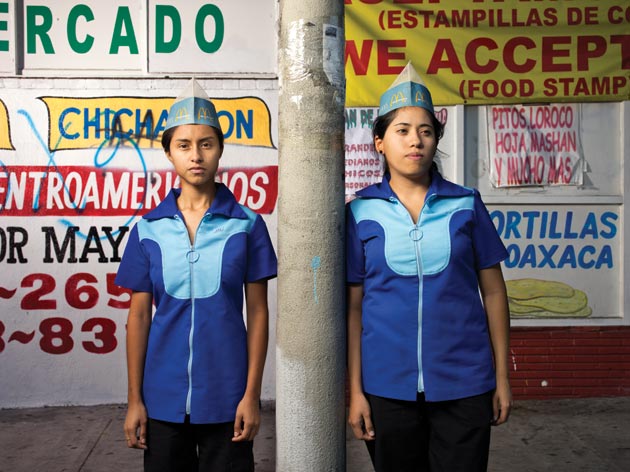
21-year-old Llasmin and 23-year-old Sonia worked at the same Hollywood McDonalds as Jackie, but both quit recently because of the low pay. “The situation is just not getting any better,” Llasmin says. Both women are students, juggling full-time school with work. Sonia, who will graduate in May, works full-time at a new job, which pays $12/hour and comes with benefits. Llasmin is working part-time at a bakery and looking for a second job.
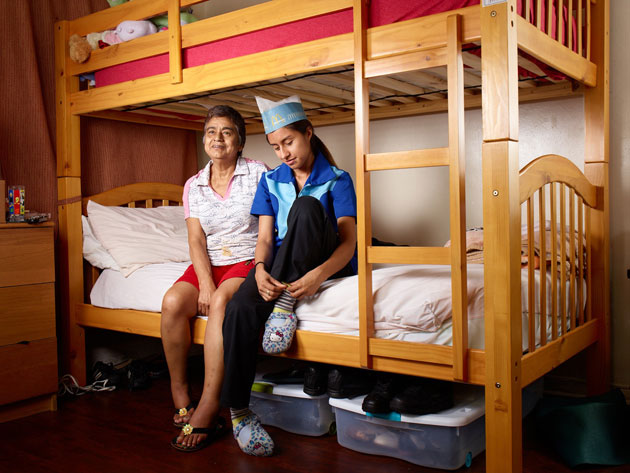
Llasmin lives with her mother (pictured) and brother in a studio apartment, sharing this bunk bed with her mom. Her mother used to sell tamales and clean houses, but has had to cut back because of health issues. Besides money her brother occasionally earns doing construction, Llasmin’s salary is now the family’s only income.
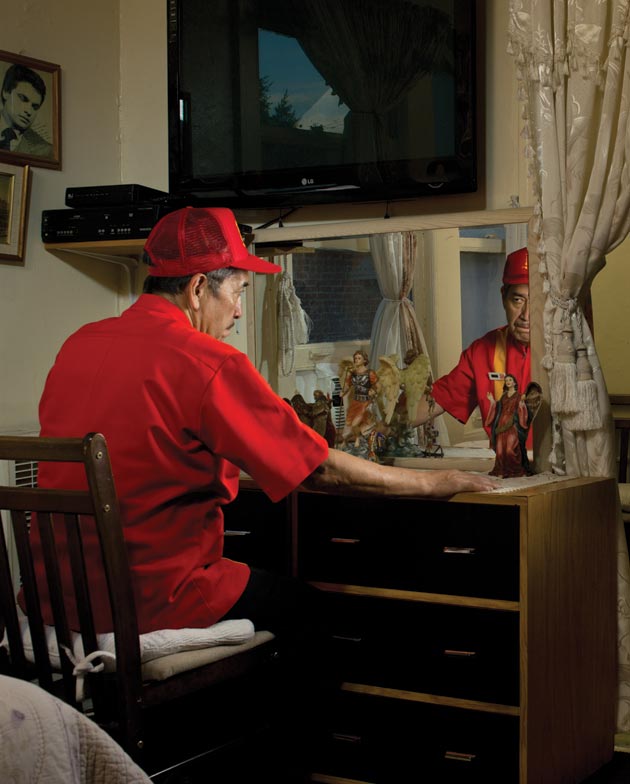
Jose, who is 61 years old, has worked at the same Burger King on Santa Monica Boulevard for 24 years. Today Jose makes $8.25 an hour—just 75 cents more than his starting wage in 1990.

Jose lives in a studio apartment across the street from his job. His rent is $700, and his monthly take-home pay recently fell to about $850 after his hours were reduced below the threshold his employer would have had to provide him with health coverage. Now Jose works six hours, five days a week, and is uninsured.
?
In order to make $___ a year, the typical fast-food worker has to work __ hours a week.
A household like yours in ___, ___ needs to earn $__ annually to make a secure yet modest living. A fast-food worker working full time would have to earn $__ an hour to make that much.
The average fast-food employee works less than 25 hours a week. To make a living wage in ___, ___ at current median wages, s/he would have to work __ hours a week.
In __ hours, McDonald’s serves __ customers and makes $__. That’s about __ Big Macs.







